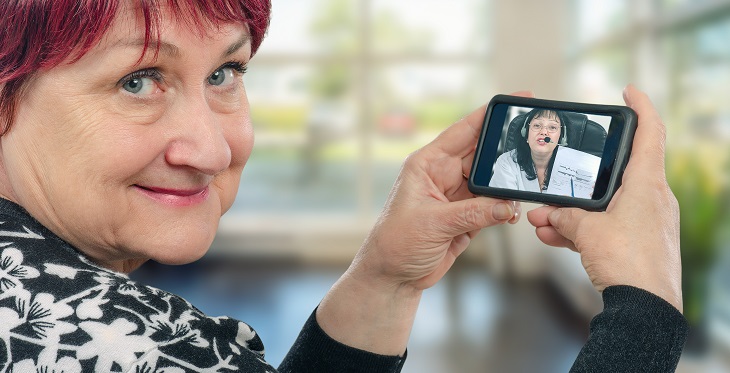If you have any involvement in providing healthcare, you are aware that Congress, multiple federal agencies, and states have made immense changes in healthcare regulation – especially in telehealth regulation – for the duration of the COVID-19 Public Health Emergency. Here is a brief summary of what is temporarily changed in terms of Medicare telehealth regulations – and it’s a lot!
Keep in mind that the rules, or at least the interpretation and implementation of the rules, are changing on a daily basis. This blog is by no means a comprehensive summary – just an overview of some of the biggest Medicare telehealth changes. Before engaging in a telehealth encounter and relying on a given regulation, please check the appropriate website or reach out to your regional Telehealth Resource Center for the most up-to-date information.
The CARES Act that Congress passed in late March is a massive economic relief package, but it also includes several important telehealth provisions. The biggest one gave the Health and Human Services (HHS) Secretary the authority to waive the 1834 restrictions – those pesky, statutory limitations on Medicare reimbursement for telehealth services that have been holding us back for more than two decades. To recap for anyone who isn’t aware: In general (with the exception of a few baby-step changes made in the past couple of years), the patient has to be in a rural area (and there is a strict definition of “rural”); the patient can only be in certain types of clinical facilities; only certain practitioner types can perform telehealth services; only approved telehealth services are covered; and it has to be a live, interactive session with audio and video (with exceptions only in Alaska and Hawaii.)
You may recall that, before the pandemic hit, the CONNECT for Health Act of 2019 was the most exciting telehealth bill in Congress, with its crucial provision giving the HHS Secretary authority to waive the 1834 restrictions. So, though the CONNECT Act is still languishing, the pandemic pushed Congress to move fast on this provision and get it passed as part of the CARES Act.
So, what does this mean in real life? HHS moved forward with waiving certain requirements and CMS has implemented a lot of it, but is still working out many of the details. Here are some of the major changes CMS has announced for telehealth services:
- The waivers apply to all Medicare telehealth services, not just those related to the diagnosis and treatment of COVID 19.
- The patient can now be anywhere, including their home, and they need not be in a rural area.
- Providers do not have to be licensed or enrolled in the state where they are providing services, as long as they are licensed and enrolled in a state – BUT this doesn’t override state licensure requirements.
- Telehealth patients can be new patients as well as established patients.
- CMS has added 80 new codes to its list of allowable telehealth services.
- Phones with both audio and video capability are officially allowed at both the patient and provider ends of a telehealth service.
- FQHCs (Federally Qualified Health Centers) & RHCs (Rural Health Clinics) can now be distant sites (provider sites) for telehealth visits (details here).
- Certain in-person visits required for nursing home, hospice, and ESRD patients may now be provided via telehealth.
- Limitations on the number of times certain telehealth services can be provided have been lifted.
- CMS implemented some waivers to the Stark Law, including the requirement that equipment be leased at fair market value.
There are still a few telehealth restrictions that CMS has not changed, as of this writing:
- The list of telehealth practitioners has not changed, meaning PTs, OTs, and SLPs cannot provide telehealth services. CMS has been asked about this repeatedly and indicates that they are aware of the issue and the need.
- A telehealth visit still requires a live, two-way, interactive session with audio and video.
Here are some of the major changes CMS has announced for services it does not consider telehealth (but I and most others do):
- Direct physician supervision may be provided using live audio/video communications.
- CMS has added E&M (evaluation & management) services that can be conducted via telephone.
- Remote Physiologic Monitoring services can be furnished to new patients as well as existing patients, and can now be furnished to patients with acute or chronic conditions and to patients with only one disease.
- The virtual services (virtual check-ins and remote evaluation of pre-recorded patient information) that CMS introduced for 2019 have the following updates:
- They now can be furnished to new patients as well as established patients.
- Patient consent (which is required for these services) can be obtained at the time of the service.
- These services must be patient-initiated, and there has been a clarification of what that means in practice.
- Certain practitioners who don’t report E&M codes, including physical therapists (PTs), occupational therapists (OTs), speech language pathologists (SLPs), licensed clinical social workers, and clinical psychologists, now can bill for e-Visits (visits conducted through a patient portal) and brief communication technology-based services. For these specialties, I highly recommend visiting your professional society websites for more information on providing telehealth services.
It’s crucial to keep in mind that these changes apply only for the duration of the COVID-19 Public Health Emergency!
Aside from the multitude of questions on how to code specific services and how to implement the changes, the big question is: Will these changes stay in effect after the COVID-19 Public Health Emergency is over?
The answer is that no one knows. It is my hope that, at the very least, all the new Medicare services being provided through telehealth will generate enough outcomes and savings data for the Congressional Budget Office to redo its decades-old evaluation of telehealth as a cost-increasing medium. This would clear the way for Congress and CMS to permanently adopt the new flexibilities around Medicare telehealth coverage – and improve access to care for millions of Americans.
For resources and much more detail on the new regulations, please go to our Telemedicine COVID-19 Resources web page.

